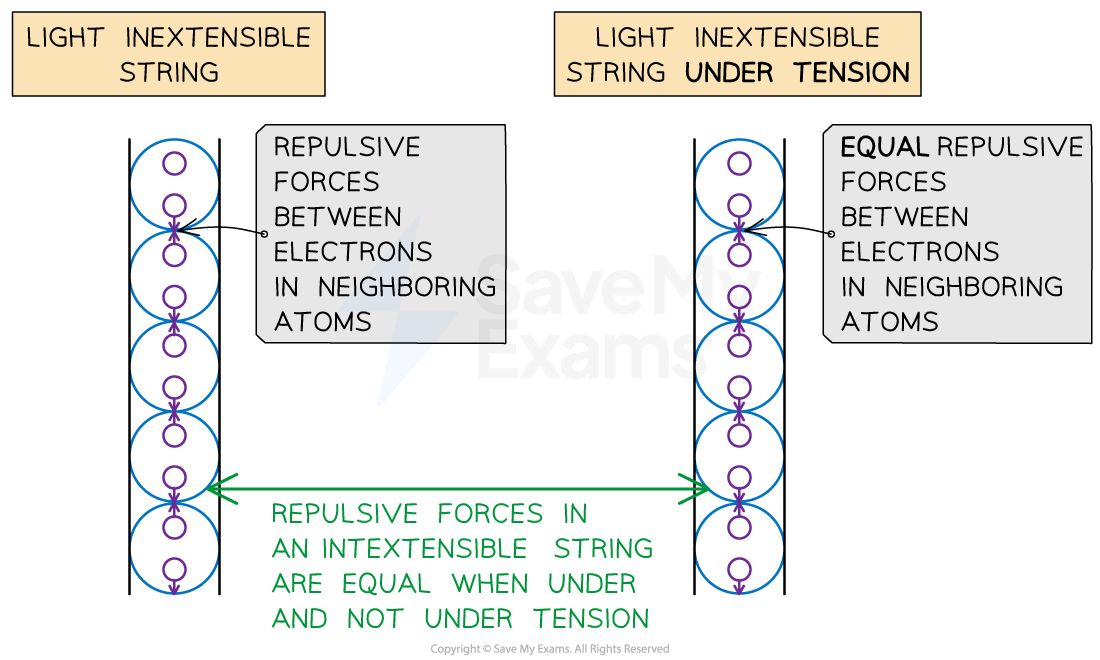Tension in Ideal & Non-Ideal Strings (College Board AP® Physics 1: Algebra-Based) : Study Guide
Tension in ideal strings
An ideal string has negligible mass and does not stretch when under tension
An ideal string is described as inextensible
An ideal string can also refer to an ideal
cable
chain
wire
rope
The tension in an ideal string is the same at all points within the string
An ideal string does not exist in reality, but they are used in model systems to simplify calculations
An ideal string under tension

Worked Example
A person of mass has fallen off a slack line stretched under tension between the peaks of two mountains. The person is suspended by a light inextensible string at the mid point of the slack line, equidistant from each peak. The weight of the person has caused the slack line to sink at an angle of
to the horizontal. The person and the slack line are stationary.

Which of the following gives the magnitude of the tension in the slack line?
A
B
C
D
The correct answer is C
Answer:
Step 1: Analyze the scenario
The slack line is assumed to be an ideal string
So tension is uniform along it
and its mass is negligible
The slack line is not completely horizontal because of the person's weight
This means the slack line has both vertical and horizontal components of tension
The system is stationary, so the tension in the left side
must equal the tension in the right side
So,
Step 2: Determine the vertical component of the tension in the slack line
Draw a diagram and label the sides of the tension triangle in relation to the angle to the horizontal

Determine the correct trigonometric function to calculate the vertical component of tension
Step 3: Resolve the system of forces acting on the slack liner vertically
Step 4: Calculate the magnitude of the tension in the slack line
Therefore, option C is correct
Tension in non-ideal strings
In a string with nonnegligible mass, tension may not be the same at all points within the string
So a non-ideal string has an extension that may not be the same at all points
A non-ideal string can also refer to a non-ideal
cable
chain
wire
rope
In reality all strings are non-ideal
There is more extension in some points than in others
A non-ideal string under tension


You've read 0 of your 5 free study guides this week
Unlock more, it's free!
Did this page help you?

